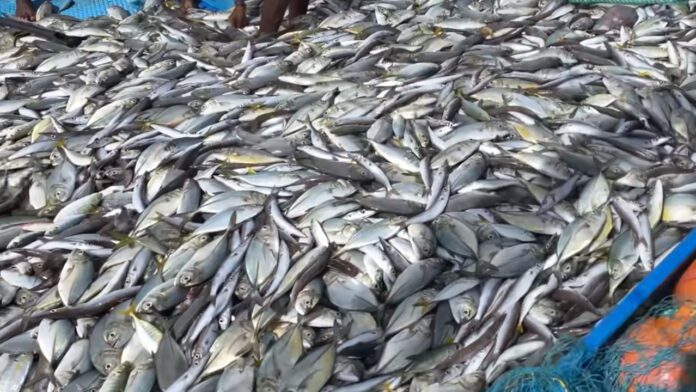Incorporating fish into your diet is an excellent way to embrace a healthy protein-rich option. Packed with essential nutrients like Omega 3 fatty acids, vitamins D and B2, fish becomes a cornerstone for maintaining a well-balanced body. Vital elements like calcium, phosphorus, zinc, iodine, magnesium, potassium, and pop are also abundant in fish, contributing to its overall nutritional value.
Fish stands out as a fantastic source of both lipids and proteins, making it a top contender for preventing heart disease and promoting cardiovascular wellness. The role of fish in delivering these benefits is now clearer than ever, prompting a greater understanding of its significance in our diets.
Moreover, fish plays a crucial role in providing the proteins and Omega 3 fatty acids that play a pivotal role in supporting bodily health. These elements are not only associated with cardiovascular benefits but also contribute to preserving cognitive function. Recognizing the value of including fish in our meals has become paramount.
Across the globe, various nations have ramped up fish production to meet the growing global demand. This effort involves employing diverse techniques and technologies, including hatcheries, to ensure a sustainable and ample supply of fish to the international market.
These Are the World’s Largest Fish Producing Countries in 2022
1. China
China holds the distinction of being the largest fish producer globally, boasting an impressive annual output of 58.8 million metric tons. In fact, China has consistently maintained its position as the unrivaled leader in fish production for several consecutive years.
Remarkably, this nation contributes a significant one-third of the total global fish consumption. The driving force behind this remarkable feat is the government’s steadfast commitment to promoting fish farming and aquaculture practices, which has played a pivotal role in facilitating such extensive fish production.
2. India
Taking the global stage as the second-largest fish producer, India’s fish industry holds a distinctive aspect in its history: the establishment of aquaculture dating back to the 19th century.
Annually, India contributes a substantial output of approximately 9,45,892 metric tons of fish. This accounts for a noteworthy 6% of the total worldwide fish production. Encouragingly, recent studies suggest that India possesses significant untapped potential to further amplify its fish output, particularly if the government extends support to the industry.
3. Indonesia
In contrast to China and India, the fish industry in this nation makes up 3% of its GDP. Annually, the country achieves an approximate fish production of 6,101,725 metric tons. Despite a decrease in the quantity of fish produced in recent years, the nation has effectively implemented enhanced methods and strategies to optimize its output. As a result, it has secured its position as the world’s third-largest fish producer today, showcasing its adaptability and progress.
One remarkable feature of this nation is the presence of the Coral Triangle coral reef, which stands as one of the planet’s largest habitats for a diverse range of fish species. This coral reef ecosystem is believed to provide shelter to a staggering variety of over 1650 different aquatic creatures.
4. Peru
Securing its place as the fourth-largest fish producer globally, Peru annually achieves an impressive fish production of 5,854,233 metric tons. Over the years, dating back to 1960, the nation has consistently ranked among the world’s leading fish producers. However, recent times have witnessed a decline in this output, primarily attributed to overfishing, a detrimental trend that has even led to the extinction of certain species.
Peru is endowed with a natural advantage in the form of a 3000 km coastline and an array of 12,000 lakes and lagoons. These aquatic landscapes provide habitats for more than 50 diverse types of fish. Notably, for a significant portion of Peru’s population, the fish sector serves as a vital source of income, reflecting its importance to the local economy and livelihoods.
5. United States of America
The United States of America stands out as a nation that excels across diverse sectors, encompassing achievements in cotton cultivation, coffee bean production, and the seafood industry. Annually, the country achieves a remarkable fish production of 5,360,597 metric tons.
Spanning a vast expanse of over 11.4 million square kilometers, this nation is home to one of the world’s largest aquatic zones. Its extensive coastline stretches over 200 miles, further enhancing its aquatic potential. A notable aspect of the United States of America’s approach is its unwavering commitment to maintaining high standards in fish output, ensuring that the quality remains uncompromised under all circumstances.
6. Chile
Chile takes pride in its extensive coastline, stretching over 2,500 miles, which accommodates one of the globe’s finest and most thriving marine ecosystems. With an annual fish production of 5,028,539 metric tons, the nation’s fisheries contribute significantly to its economic vitality, serving as a primary source of income.
A remarkable facet of Chile’s fish industry is its emphasis on small-scale farming conducted by individual families. This approach enables them to generate income that sustains their livelihoods. This practice not only underscores the importance of community engagement but also highlights the integral role that these families play in the nation’s overall fish production landscape.
7. Japan
No comprehensive list would be whole without mentioning Japan. The nation’s seafood delights have garnered international renown, with an annual fish production reaching 4,819,116 metric tons.
A significant portion of Japan’s fish output finds its way to global markets through exports. A notable characteristic of Japan’s thriving fish industry lies in its ability to offer some of the most exquisite and flavorsome fish products found anywhere in the world. This emphasis on providing exceptional and unique options has contributed to Japan’s enduring reputation as a hub of culinary excellence in the realm of seafood.
8. Thailand
Thailand contributes an annual fish production of 3,743,564 metric tons to the global market. Interestingly, imported Chinese carp have been cultivated through aquaculture in Thailand for a remarkable span of 80 years.
Notably, this nation has witnessed a consistent growth in its annual fish production over recent years, largely attributed to its adoption of the brackish water aquaculture technique. This progressive approach has played a pivotal role in boosting Thailand’s fish output and enhancing its prominence in the global fisheries landscape.
9. Vietnam
Vietnam boasts an annual fish production of 3,367,853 metric tons, reflecting its significant contribution to the world’s fish supply. Since the 1960s, the nation has harnessed the power of aquaculture as a primary method to meet its domestic fish consumption needs.
Remarkably, Vietnam is home to an impressive array of 2,458 distinct fish species, a count that surpasses that of any other country. This rich diversity underscores the nation’s thriving aquatic ecosystems and highlights its vital role in maintaining biodiversity within the global fish population.
10. Russia
Russia contributes an annual fish production of 3,305,749 metric tons, reflecting its presence as a significant player in the global fisheries landscape. Interestingly, the nation’s utilization of its abundant natural resources for fish cultivation is relatively lower compared to some of its counterparts.
The vast expanse of Russia is adorned with approximately 2 million rivers and extensive coastlines, providing ample opportunities for fish production. In recent decades, the nation has encountered its share of challenges. Nevertheless, the government is actively engaged in implementing effective strategies to address these issues and stimulate increased fish output. This commitment underscores Russia’s determination to harness its aquatic potential and contribute to the world’s fish supply.














![Technical Aspects of 844 Area Code in 2024 [Detail Guide] 844 Area Code](https://articleify.com/wp-content/uploads/2024/01/844-Area-Code-150x150.jpg)














